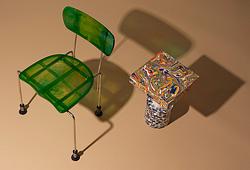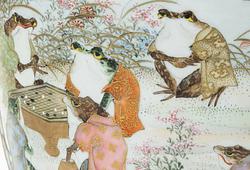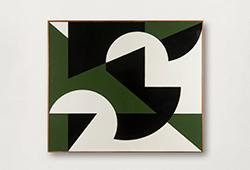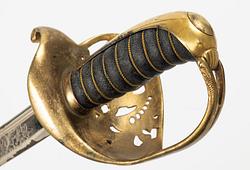A pair of Royal Copenhagen 'Flora Danica' wine coolers/flower pots, Denmark, 20th Century.
Painted and gilded decoration after a literary work over the Danish Flora. Marked with model no 3574. Height 16 cm. Length 25 cm.
Insignificant wear.
Näyttelyt
The first Flora Danica service has an amazing story of war and alliance. In 1788-89 Russia and Sweden are at war. At the time Russia and Denmark are defence allies – but in the crucial hour Denmark fails to support the Russian army. Thus, the Danish King needs to make amends and come up with a reconciliation gift worthy of the Russian Empress. In 1790 he places an order for a dinner service so magnificent it can dazzle the whole world - the Flora Danica dinner service- and definitely an Empress like Catherine the 2nd, who is a notorious collector of fine porcelain. The production takes a long time and unfortunately the Empress dies before it is finished and the porcelain never crosses the boarders of Denmark.
1530 pieces still remain with the Royal Household of Denmark today, the service was first used in 1803. It has continued to work as an ambassador and a distinquished gift. Upon the marriage of princess Alexandra to Edward 7th of Wales in 1862, she brought with her an impressive Flora Danica dinner service. The service has continued to work its in to the royal house holds around the word and many collect these sought after dinner sets. The production still continues today, but some items have a waitinglist.
Kirjallisuus
The story of Flora Danica begins in the Age of Enlightenment. In a time where humans strive for rational knowledge of nature and King Frederik the 5th of Denmark commands that all the plants in the entire kingdom are put in a reference work, so that they can be studied and their riches exploited. In 1752 botanist Georg Christian Oeder is appointed the task - and 9 years later the first booklet in the reference work is published. It consists of 60 copper prints so divine that rumours about them travel the world. For the next 10 years (1761-1771), Oeder publishes 10 booklets with 60 copper prints in each booklet. He is then replaced. His replacement is replaced. And within 122 years the collection grows into an impressive collection of 3240 motifs of flowers and plants organized in 51 booklets (plus 3 supplement booklets) titled Flora Danica.














































